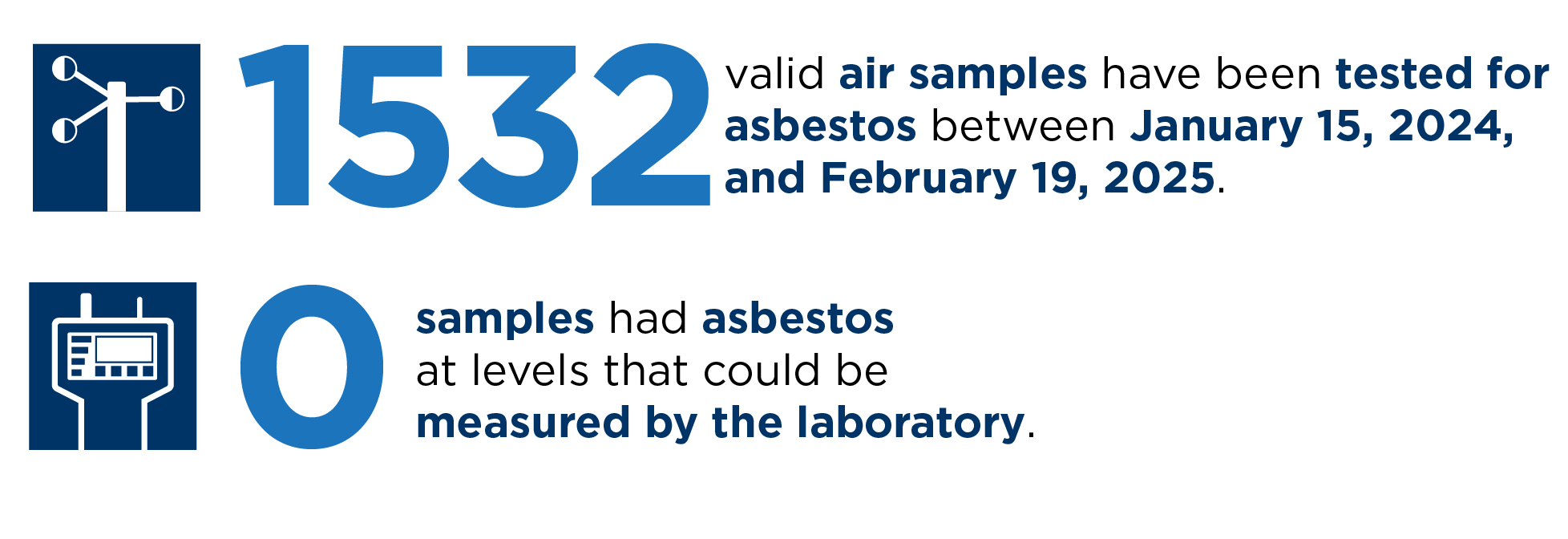Asbestos
Air | Ash and Debris | Beach Sand | Coastal Sediment | Coastal Waters | County Parks | West Maui TDS Site | Soil
Maui Wildfire Data: Air
Asbestos in Lahaina
Community air monitoring took place in late 2023, 2024, and early 2025. Monitoring was completed February 19, 2025. Data are available below.
Asbestos refers to different types of naturally occurring mineral fibers. The fibers were widely used for decades in products like car brakes and construction materials, including insulation, tiles, and shingles. Asbestos fibers are extremely resistant to heat and are not readily destroyed by fire, which is likely why some asbestos fibers have been identified in the ash at Lahaina. At high levels of exposure over long durations, breathing in asbestos fibers can cause cancer and other health effects.
Health Findings
Even though asbestos has been found in some Lahaina ash samples, the amount of asbestos in the air has been too small to detect. In fact, not one of the air samples that DOH collected in 2024 or 2025 contained asbestos fibers at levels that could be reliably measured. People in Lahaina are not being exposed to airborne asbestos at levels of health concern. Further, USACE sampled air at its worksites in and near Lahaina, and their measurements were all below occupational exposure limits.
Recommendation to residents
Continue to protect yourself from asbestos fibers and other harmful substances in ash. If you are near a location where there is visible dust or if the ash will be disturbed, you can limit the amount of asbestos fibers you might breathe in by either temporarily leaving the area or by wearing a snug-fitting dust mask or N95 mask—look for the words “NIOSH Approved” printed on the mask. Read more about how to protect yourself in DOH’s Maui Wildfires Air Quality Guide for Particle Pollution fact sheet (PDF, opens in a new tab).

What is being done to reduce asbestos exposures
Many steps have been taken to make sure no one is exposed to unhealthy levels of asbestos. Soiltac® has been sprayed on the ash to keep it in place, and debris removal and TDS Site operations use various strategies—like water sprays—to control dust and keep ash out of the air. DOH collected daily air samples at four locations in Lahaina, and a laboratory checked those samples for asbestos fibers. DOH reviewed the air sample results as soon as they were available to make sure airborne asbestos did not reach unhealthy levels, and will continue to review monitoring data during transfer of debris from the TDS Site to the PDS.
Air | Ash and Debris | Beach Sand | Coastal Sediment | Coastal Waters | County Parks | West Maui TDS Site | Soil
